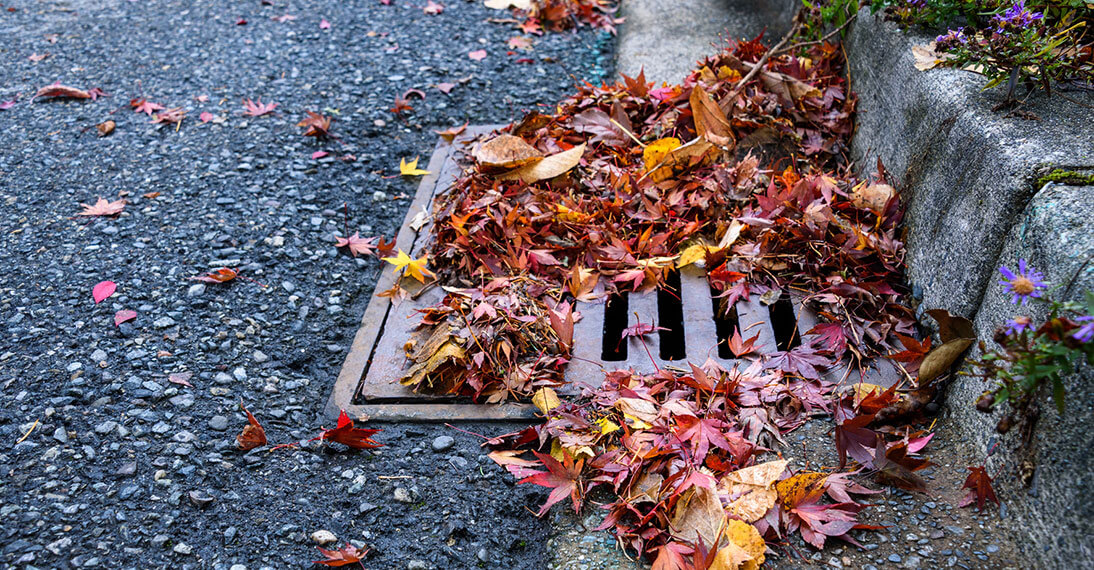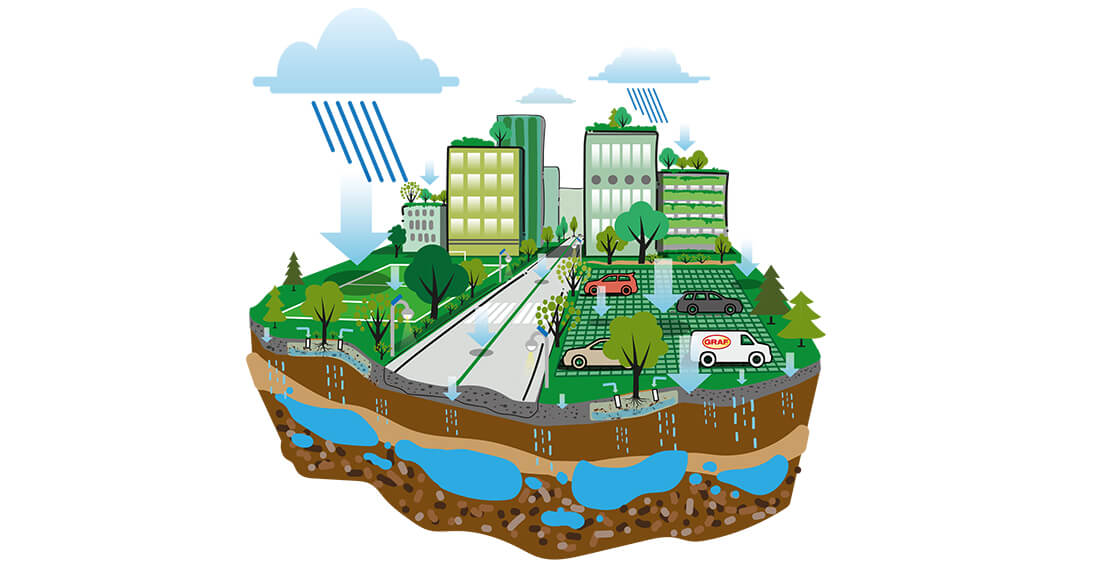"Sponge City”- Rainwater left here!
Drain rainwater into the sewer system? The sponge city prefers to store it locally. Read our interview with Prof. Dr. Roland Müller from the Helmholtz Centre for Environmental Research in Leipzig to find out how cities can optimize their water cycle in order to be better equipped for climate change.
Urban areas around the world are struggling with the consequences of climate change. Extreme weather events are pushing urban infrastructures to their limits, threatening people's health, polluting the environment and causing considerable costs. Biotechnologist Prof. Dr. Roland Müller is researching the possibilities of adapting the local water cycle in cities to the new challenges and climate change. What is needed? More decentralized solutions. And above all: quick action ...
Prof. Müller, what challenges do cities face when we talk about rainwater?
Water is both a curse and a blessing: on the one hand, climate change will lead to an increase in heavy rainfall events, which will put a considerable strain on municipal infrastructures. At the same time, periods of heat and drought are increasing. These put urban greenery under stress, reduce our quality of life and pose a health risk for some population groups. The aim must be to store precipitation in times of abundance in order to have sufficient water available in times of scarcity. Urban planning must respond to this, adapt its water management and make cities fit and resilient. A complex task that should be started today rather than tomorrow.
So time is of the essence. What would be some measures that could be implemented quickly?
We are talking about a collection of technologies that we summarize as blue-green, multifunctional water infrastructures. Multifunctional because they have multiple effects for the city. A classic example is the green roof: it can store rainwater, where it gradually evaporates again and improves the microclimate. Or it can be diverted into the inner courtyard for storage in tanks or for infiltration to fill the local groundwater reservoir. Such a roof also has an insulating effect for the floors of the building below. In addition, the plants reflect light energy - at least if the green roof is ecologically fit, i.e. if it is green when it needs to be green: in summer. Water can also be permanently stored in cisterns in backyards or temporarily stored and seeped away in infiltration and trough systems. And the green infrastructure, i.e. trees, parks, etc., should also be included, for example via tree infiltration systems. Decentralized rainwater infrastructures are therefore required in order to adapt the water cycles of a city to suit the specific climatic conditions and local circumstances.
These measures are very small-scale - what effect can we expect from them?
Heavy rainfall, which today disappears into the sewer network, quickly leads to runoff peaks and thus to flooding and sewer overflows. With many small, decentralized storage and infiltration options, I can mitigate these peaks and thus reduce the risks. In fact, entire neighborhoods can already be disconnected from the sewer network so that the rainwater remains in the neighborhood - with little technical effort. That is the charm of planning with such small-scale systems. Model calculations have shown this: We can retain around 90 percent of the water from a 30-year rain event. Looking at the city as a whole, there is considerable scope for design, even if just 10 to 20 percent of the districts were to be disconnected from the network.

Has the issue already been widely accepted by those responsible?
By and large, I think so. More and more cities are declaring a climate emergency and are starting to think and plan in a water-sensitive way. And there are various documents such as the National Water Strategy from the Federal Ministry for the Environment and other guidelines that city politicians should be familiar with by now. I would be very surprised if the cities, city councils and environmental agencies did not read them. It has to be said quite clearly that this is compulsory reading.
Politics alone cannot fix it, can it?
New planning and communication structures need to be created and more stakeholders need to come together: the various authorities, planners and investors. We see housing associations and cooperatives in particular, which own up to 30 or 40 percent of residential space, as important partners in urban redevelopment. So that more of these water-sensitive measures are implemented not only in new-build districts, but also in the renovation of existing buildings. A lot could be achieved through appropriate regulations and ordinances, but also through incentive systems and subsidies, as we know from energy-efficient refurbishment. We have observed that there are investors and housing associations, particularly in large cities, who are quite willing to break new ground.
Water-sensitive urban planning also requires a certain amount of expertise in order to align tenders, regulations and plans accordingly. Where should this come from?
Smaller municipalities often lack the staff to tackle and implement all of this. Here too, larger cities could demonstrate how it is done so that smaller ones can benefit from the results more quickly. There is also a lot of knowledge available from the German sponge city model projects. As scientific advisors to the Leipzig project, for example, we have reached around 1,000 municipal representatives through various events and measures. Of course, such an urban transformation does not happen overnight. But we should start implementing this water-sensitive planning philosophy as quickly as possible at neighborhood or apartment block level. The cities, the authorities, the companies - everyone learns with every project that is implemented, which is important.
Sponge City: sponge under it!
Most of the rain that falls on buildings, parking lots and streets ends up in drains and is transported to the gates of the city - into retention basins, sewage treatment plants or rivers. As a result, the increasing sealing of surfaces disrupts the natural water cycle in cities. Flooding and overheating in summer are the frequent consequences. In a sponge city, urban planners therefore want to create natural reservoirs for rainwater with an adapted local infrastructure. For example, the new Leipzig 416 district is currently being built on the former site of the Eutritzscher Freiladebahnhof in Leipzig. The model project, which is being supported by the Federal Ministry of Education and Research with a good 2.8 million euros, aims to create a runoff-free and resource-efficient urban district.

Among other things, the aim is to reduce the burden on the wastewater system, improve the microclimate and enable resilient heavy rain management. The aim is not only to test multifunctional water infrastructures, but also new communication and decision-making structures between stakeholders from the municipality, science and the private sector. The Helmholtz Center for Environmental Research (UFZ) in Leipzig is leading the project.



